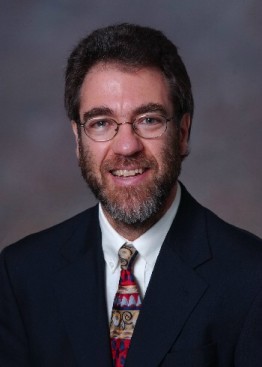 Proposing the Addition of a SOC Code for Informatics
Proposing the Addition of a SOC Code for Informatics
William Hersh, MD, Professor and Chair, OHSU
Blog: Informatics Professor
About a decade ago, as my interests and work activity began to focus more on informatics education and workforce development, I started to ask questions about the size, scope, and required education of that workforce. Despite seeing great interest in the informatics education programs at Oregon Health & Science University (OHSU), I could find very little data about how many people were working in the field, how many more were needed, what their job activities were, or what knowledge and skills they required. I noted these problems in the first paper on this topic I published [1], and then tried to answer some of the questions on the size of the workforce with the best data I could find, which was the HIMSS Analytics Database. This led to my widely publicized finding of a need for at least 40,000 more health information technology professionals [2], which was part of the motivation for including workforce development in the Health Information Technology for Economic and Clinical Health (HITECH) Act. At the same time, I was learning that many human resources (HR) professionals were unaware of the background and skills of those working in the growing number of clinical informatics roles in healthcare organizations.
One reason for all these problems was the lack of informatics being visible in federal labor statistics. In particular, there was no Standard Occupation Classification (SOC) code for informatics. I came to learn that the importance of such codes cannot be underestimated, as they define the labor statistics maintained by the US government. They also are used by others, such as Human Resources (HR) departments in organizations to classify job offerings.
There is one code that is somewhat related to informatics, and sometimes used to point to workforce needs: 29-2071 Medical Records and Health Information Technicians. The occupations described by this code are those that “compile, process, and maintain medical records of hospital and clinic patients in a manner consistent with medical, administrative, ethical, legal, and regulatory requirements of the health care system. Process, maintain, compile, and report patient information for health requirements and standards in a manner consistent with the healthcare industry’s numerical coding system.” However, this code refers to the relatively low-level work of coding and maintaining medical records, and not the myriad of activities carried out by informatics professionals.
The SOC system is maintained by the US Bureau of Labor Statistics (BLS) and is revised periodically with a multi-year process. The last update was in 2010, and the informatics field was not organized enough to pursue a revision. The next update will be in 2018, and a few months ago, the government made its first call for public input for modifications to the SOC 2010 system, with recommendations by this past Monday, July 21st. For over the last year, I have been part of a team of individuals and groups (ONC, AHIMA, AMIA, and HIMSS) working to propose the inclusion of the health informatics occupation into the SOC. Our letter was submitted this week, with an AMIA press release noting the large and diverse groups supporting the inclusion.
In the process of preparing the letter, I learned a great deal about the SOC system and the process for revising it. SOC codes are supposed to describe occupations more than specific jobs. There need to be substantial numbers of people in the occupation, which must be unique from others in the SOC. The classification unfortunately has a single hierarchy, which makes it difficult to represent occupations that cross boundaries, such as health informatics. But in the end, the overwhelming sentiment of the group, one I strongly advocated as well, was that health/biomedical/clinical informatics is primarily a health professional occupation and not a computing occupation. Therefore, our overall recommendation was to add a new Health Informatics occupation residing under the major group, 29-0000 Healthcare Practitioners and Technical Occupations.
I was also pleased with several other aspects of the letter:
- It notes that while we are asking to call the new occupation “health informatics,” there are other terms, such as “biomedical informatics” and “clinical informatics,” which are used to describe this occupation, and all of these all refer to the same general occupation of “health informatics.”
- There is inclusion of discussion about the new clinical informatics physician subspecialty, which not only demonstrates that informatics is important to medicine (and all health professions) but that it was not unique to any primary medical specialty.
- It calls out the large and growing number of informatics educational programs, most of which are at the graduate level.
As noted on the BLS site, there are many more steps for revision the 2018 SOC. But it has been made clear from leaders in the field that there is an important occupation of health informatics, which is a health profession that should be included in the SOC.
References
1. Hersh, WR (2006). Who are the informaticians? What we know and should know. Journal of the American Medical Informatics Association. 13: 166-170.
2. Hersh, WR and Wright, A (2008). What workforce is needed to implement the health information technology agenda? An analysis from the HIMSS Analytics™ Database. AMIA Annual Symposium Proceedings, Washington, DC. American Medical Informatics Association. 303-307.
This article post first appeared on The Informatics Professor. Dr. Hersh is a frequent contributing expert to HITECH Answers.
